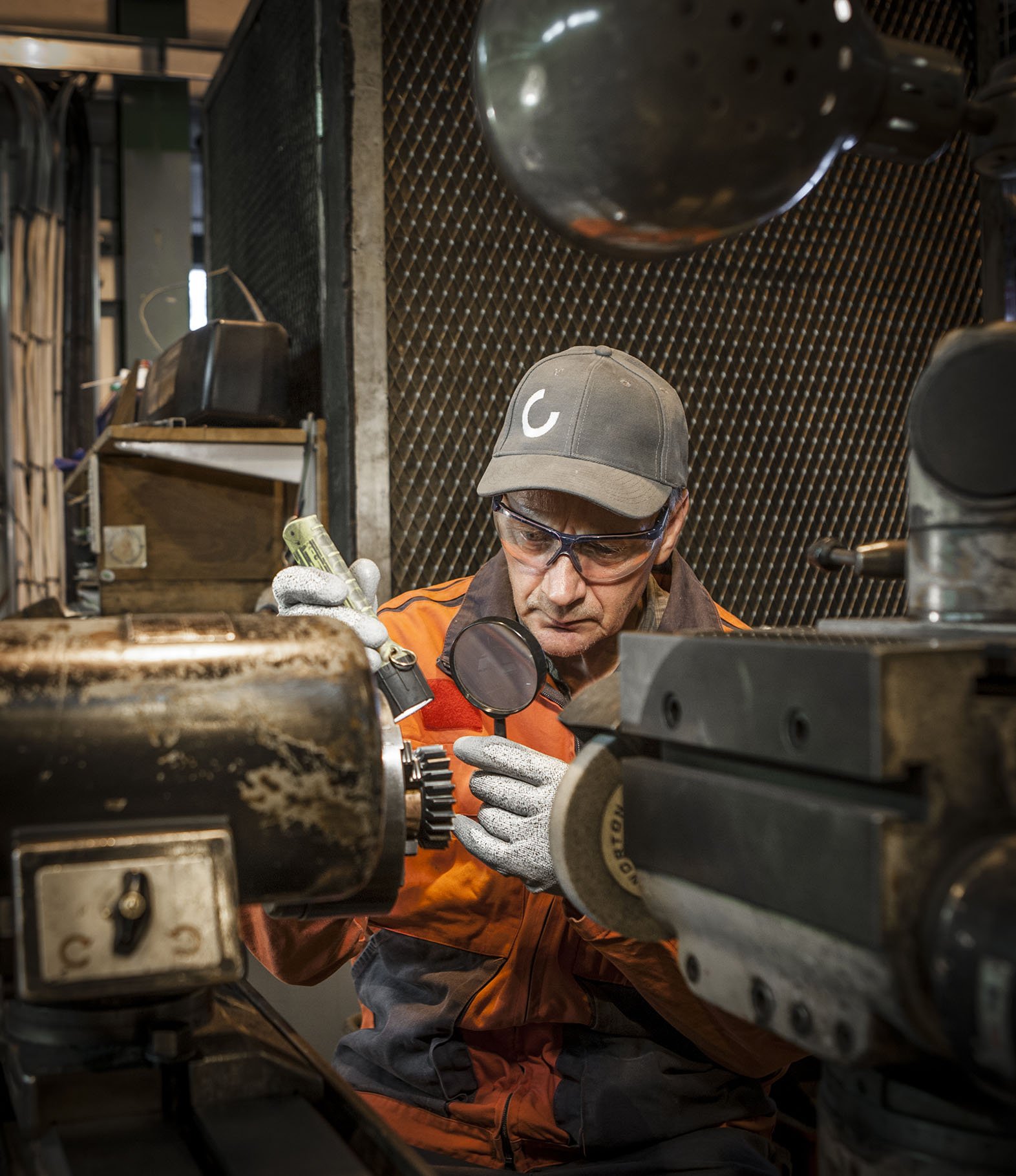Article
Circularity: creating value for customers and climate
Science, media and politics show one trend for sure: The Climate Emergency is one of the main drivers of change. Many solutions are being discussed to tackle current and future climate-related challenges. One buzzword that is gaining foothold is circularity. But what exactly does that mean?
By Satu Kaivonen, Sustainability Manager
A virtuous circle
Circular economy aims at optimizing resource usage and retaining the value of existing materials and products while decoupling value creation from resource consumption. Circularity therefore plays an essential role in tackling climate change and the loss of biodiversity. There needs to be a fundamental shift in the global approach to the way we value raw materials. The idea of circularity is simply genius and therefore it works: TAKE, MAKE, WASTE, CREATE, USE, RETURN. Greenhouse gases can be reduced if resource efficiency is improved, waste and pollution are designed out and materials and products are kept in use longer.
Jyri Arponen, Senior Lead, Sitra:
We have an urgency to change our economy to respond to climate change, decreasing biodiversity, the dwindling availability of resources and waste-related problems. A big change in industrial culture, mindset, capabilities and behavior is needed: Shifting the focus from production to the customer and maximizing the value of the existing products with data and new technologies, while decoupling value creation from resource consumption. Not only is the circular economy approach financially very viable, it’s realistically the only way to be able to operate in the future. With circular business models you gain a competitive advantage, attract investors and create a sense of purpose.”
How is Konecranes using this concept to benefit customers?
Going circular usually leads to a new relationship with the customer as the scope of cooperation broadens – we not only deliver a product, we provide an efficient resource-wise solution. Working together with the whole value chain, we can enable more efficient use of raw materials, increase energy efficiency and create value for all parties.
Our solutions aim to simplify and advance our customers’ everyday business: they can outsource their spare part warehousing, rent a material handling system and automatically order parts when needed. They can also depend on us to keep older cranes running by re-engineering obsolete crane parts. Preventive maintenance supports customers’ emission reductions as the data can be used to optimize maintenance activities (service visits and spare part needs). It is possible to avoid a significant amount of CO2 emissions if existing steel structures are enhanced instead of being replaced.
Digitalization supports circular economy and optimizing resource use within industries by harnessing the industrial internet, connecting data, machines and people. Having real-time performance data in digital platforms helps us start conversations about improving the overall process, be it larger overhauls, retrofits or making suggestions about taking the first steps towards automation. The data also secures that we can get all the work done in one visit, maximizing all resources including maintenance time, optimizing spare part orders and logistics.
Tapani Mylly, Communications and Sustainability Director, Turku Meyer:
We wanted to extend the life cycle of our old hull production crane from 1976. The decision to modernize the crane was based on the need to have an operating crane that can handle the increased production demands and have the crane available in hull production without long maintenance breaks while also avoiding excess environmental impact. On top of improved performance, modernizations increase safety and the availability of technical support and spare parts as well as decrease the number of repairs and unscheduled maintenance.
As the old Goliath’s entire steel structure is used in the modernized crane, approximately 4,000 tons of CO2 emissions were avoided since there was no need to manufacture a new steel structure. Due to the modernization, now the Goliath crane's performance meets the production needs of our demand and our fullorder book until 2026.”
Konecranes circular solutions save resources and money
Besides supporting day-to-day operations, we want to help our customers reach their environmental targets and save resources.
Konecranes offers circularity aspects along the lifecycle of our products:
- The design of Konecranes products is based on smart design principles focusing on repairability, durability as well as material and energy efficiency.
- The lifecycle of our products is long, even decades, meaning the customer can preserve the value of their assets for a long time.
- Maintenance and repair are the key to extending the lifecycle, but by using predictive maintenance our customers can maximize the lifecycle value of their products. Using data to predict component or equipment failure optimizes all activities and thus saves resources and avoids emissions.
- The equipment can be retrofitted and modernized several times during its life span.
- With predictive maintenance we guarantee the customer has their equipment in use when needed with as few maintenance visits as possible; this brings greater cost understanding and keeps performance levels high.
Industry plays a major role in tackling climate challenges – and these challenges are driving new business models that are beneficial for our customers. The recognition Konecranes recently received in Finnish Innovation Fund Sitra’s ranking of most interesting circular economy cases shows that we are on the right path. We can both decrease emissions and help manage maintenance costs by offering circular service solutions, and that is simply a win-win situation.


